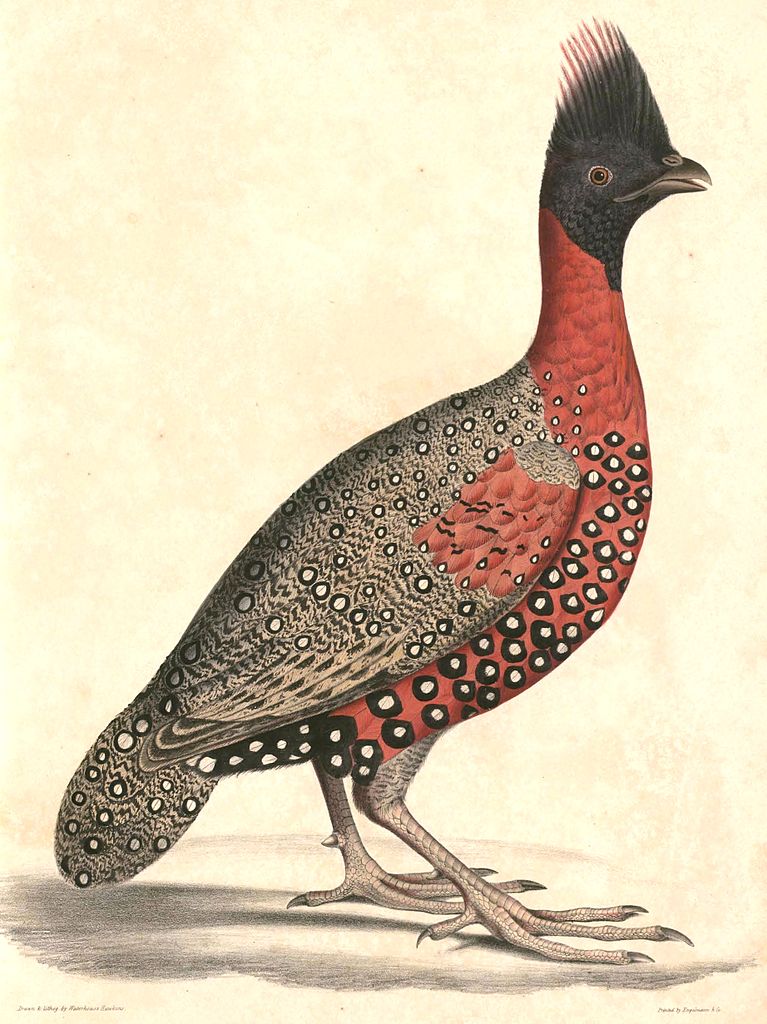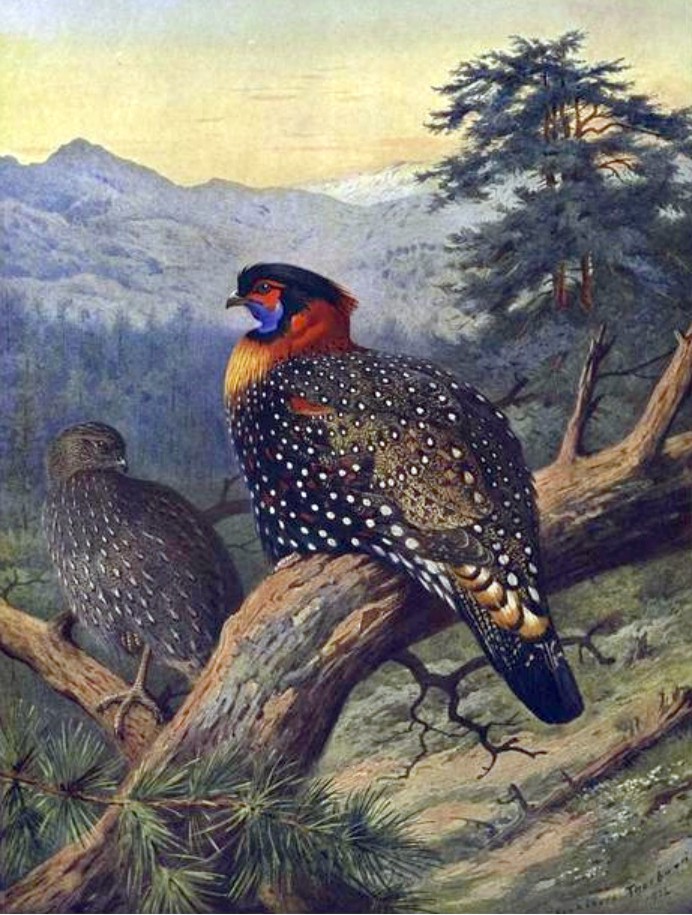Not satisfied with having made all kinds of birds, check the gods took time off to create the Western Tragopan. The unparalleled beauty of the Tragopan comes from a feather each; contributed by all the bird species that exist and offered to the gods to clothe this beautiful monarch among birds, order speak the legends of Kullu Valley.
The male bird’s flame-red breast, a scarlet face and nape with a spiky black crest, crowns it with majesty. A bright star like white spot in the middle of each black feather of the belly and the dark wings give it grandeur. In contrast the female is dull brown.
The Western Tragopan inhabits a relatively small range in the Western Himalayas. As a region specific specie, perhaps the maximum sightings anywhere of this rare bird in recent times have been reported in Himachal Pradesh by renowned bird watchers of the world. In the state this bird has been sighted in the higher reaches of BeasValley in Kullu, the Chenab and Ravi valleys in Chamba and parts of Satluj valley in upper Shimla hills and Kinnaur regions.


The tragopan prefers to dwell in a limited variety of vegetation consisting mainly of coniferous, broadleaf, deciduous or mixed forests with ringal bamboo.
In other places tragopan sightings have been recorded from parts of western Uttraanchal, higher reaches in Kashmir on both sides of Indo-Pak line of control and in the North Western Frontier Province of Pakistan.
Biologically named Tragopan melanocephalus, the Western Tragopan, belongs to a highly specialized group of pheasants of the Phasianidae family. In all five species of tragopans are known to occur the world over of which four are found inIndia and one inChina. In the Indian region itself, it is one of the sixteen species of pheasants which are considered as threatened and endangered.
Beauty doth provoke thieves faster than gold and so has the Western Tragopan been a victim of its spectacular looks. Hunted down the ages for its plume and bright feathers, to an extent that today it figures in the red book of animals and birds that are on the verge of extinction around the world.
International conservation efforts have helped to establish the Great Himalayan National Park in the Beas valleyof Kullu as a safe sanctuary for the Western Tragopan. Encompassing the Parvati, Jiwa Nal, Sainj and TirthanValleys of Kullu region, the Himalayan Parktoday probably has the largest concentration of tragopans populations anywhere.
A peasantry at Saharan in Satluj up valley did breed the western tragopan in captivity and an international assisted breeding programme has been chalked out in an attempt to replenish the birds depleting numbers in the wild.
To sight the bird in the wild, the chances of coming across this shy and elusive bird at relatively lower altitudes between Octobers to late April are a good time. In April the pheasants are calling and the leaves on the deciduous trees are still in a bud stage, offering better chances of sighting the bright male tragopan in the undergrowth. Later in the year it moves to higher reaches which are harder to access.
